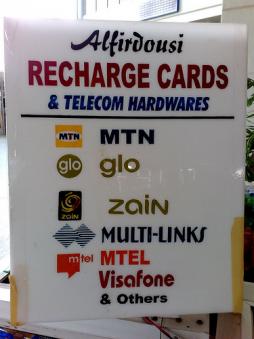The Swedish International Development and Cooperation Agency (Sida) recently published a report, The Innovative Use of Mobile Applications in East Africa, that provides an overview of the current state of mobile phone applications for social and economic developments in East Africa. The report seeks to answer “what hinders the take-off of m-applications for development in East Africa" and asks what role donors should play.
While mobile phones are the main channel for information in East Africa, with mobile penetration covering over 40% of the population, sustainable, scalable mobile services for social and economic development are limited. The report is supported by secondary data, statistics, and field work carried out in Kenya, Rwanda and Tanzania, along with numerous interviews, meetings and discussions with key stakeholders in East Africa. Major trends in mobile usage, barriers for increased use of m-applications, as well as opportunities for scaling are discussed.
Barriers: High Cost of Ownership.
The most significant barrier presented is the high total cost of ownership and use (including cost of device, airtime, charging etc.). In general, SMS is overpriced, along with voice and data traffic. There is poor marketing of available applications on the part of mobile operators. Lack of electricity and illiteracy also pose as major obstacles. One of the biggest critiques in the report is that many interventions are not designed with scale in mind.
To begin, the report profiles East Africa’s ICT sector and the mobile market. Although mobile cellular penetration is high - Kenya has the highest regional penetration with 42% – one needs to be cautious of data representing actual phone ownership and use. As Ewan Sutherland in his paper explains, operators use different techniques to account for their customer base. Some count the number of SIM cards sold, or the number of active customers, but may not account for multiple SIM ownership, SIM holders without handsets or phone sharing practices for example.
In East Africa, people tend to spend more or less half of their disposable income on mobile communications as has been pointed out by others such as Chasbossou et al. in 2009. Owning a phone is a luxury for the vast majority of users. In addition to affordability, electricity, and literacy, additional barriers identified include language, privacy issues, gender, and concerns about security (i.e. phone theft) in developing, implementing and sustaining mobile applications.
The Outlook for Mobiles in East Africa
In Kenya, M-PESA’s success paved the way for numerous mobile banking schemes. Increased competition drove down prices. Although the average revenue per user (ARPU) has declined, overall revenues are still high for mobile operators.
In Rwanda, ICT is heavily supported by the Rwandan government. Problems in this region are highlighted with respect to quality of service and lack of competition, leading to high prices. This has resulted in some of the lowest penetration rates (13%) in Rwanda compared to other countries in East Africa.
Tanzania’s mobile market has been growing more than 60% per year in the last five years, and passed the 17 million mark in 2009. Mobile services are delivered by six operators, and the market growth is set to continue.
Uganda’s mobile penetration is low and SIM cards and handsets remain beyond the reach of many. Interestingly, there is a policy on universal access that the Rural Communications Development Fund has set up, through which operators in Uganda have to pay a levy of 1% on revenues to support internet points of access and public pay phones in rural areas.
SMS or Voice? Is the Future of ICT in East Africa IP-Based?
A significant section of the report is devoted to discussing the major mobile operators in East Africa, including in-depth coverage of services, tariffs and network-network collaborations. Outlined are the obstacles and opportunities for SMS, Voice (specifically, interactive voice response systems), USSD and mobile broadband in East Africa. The culture of beeping in East Africa is quite popular; however, to the dismay of operators, this practice jams networks. SMS usage can significantly relieve the load on voice/data bandwidths, if operators zero-rated or priced SMS much closer to real costs. Per-second billing is a more appealing option for mobile subscribers with limited funds as is already the practice in India. Mobile broadband is identified as a fast growing market over the next few years in East Africa as well.
There is a fascinating discussion of mobile payments and banking. Based on the lessons learned from and success of M-PESA in Kenya and Tanzania, Sida predicts an exponential increase in mobile transactions in the future.
Avoiding The “Forever Pilot Syndrome”
Scalability is a key focus in the report. Sida offers a list of success factors in designing projects and recommends to shift away from pilots and move towards a comprehensive service delivery approach. This means focusing on usability, collaborating with other organizations, documenting lessons learned, and learning from failures as well as successes. In the implementation phase, Sida recommends involving end users in content creation, educating the users and investing in marketing to gain a critical mass of users.
The fuill report can be downloaded here from Sida’s publication database.
Photo Credit: Creative Commons/ Wayan Vota
| How Mobile Apps Are Shaking Up East Africa data sheet 6263 Views | |
|---|---|
| Countries: | Kenya Rwanda Tanzania Uganda |


Post new comment